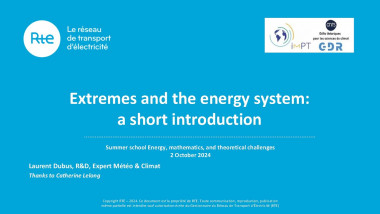Renewable energy forecasting: State of the art & latest tendencies of research
In the context of the energy transition, electricity grids are integrating massive amounts of weather-dependent renewable generation (mainly wind and solar), the volatility and uncertainty of which bring unprecedented challenges to the grid operation. Short-term forecasts of renewable (RES) production at horizons ranging from a few minutes to a few days ahead, are widely used by the involved actors (grid operators, aggregators, traders…) to make decisions regarding the safe and economic operation of the electricity grid. Research and development in RES forecasting dates back to the ‘80s and has evolved into a very active area of research today. The aim is always to improve accuracy and better estimate uncertainties, as large errors can have considerable technical and financial consequences. Operational forecasting systems have been in use since the early ‘90s. By that time, AI came on board in the field of renewable energies, with neural network models applied for the first time to wind power forecasting. 30 years later, AI-based approaches are widely used in energy forecasting. In this talk we will present the state of the art in RES forecasting, highlight the main contributions in the literature and how forecasts are used in applications. We will present some disruptive approaches developed in the frame of the H2020 EU project Smart4RES for forecasting and optimal use of forecasts for power systems management and energy trading. These include AI-based approaches that enhance energy forecasting with properties beyond classical accuracy, such as resilience, simplicity, interpretability and value maximization. Finally, we will present advances on joint forecasting and optimization (prescriptive analytics) that permit to simplify model chains, collaborative forecasting supported by privacy-preserving data sharing.
































